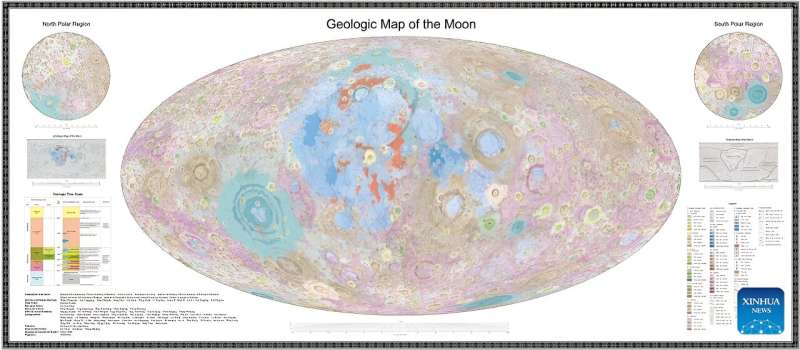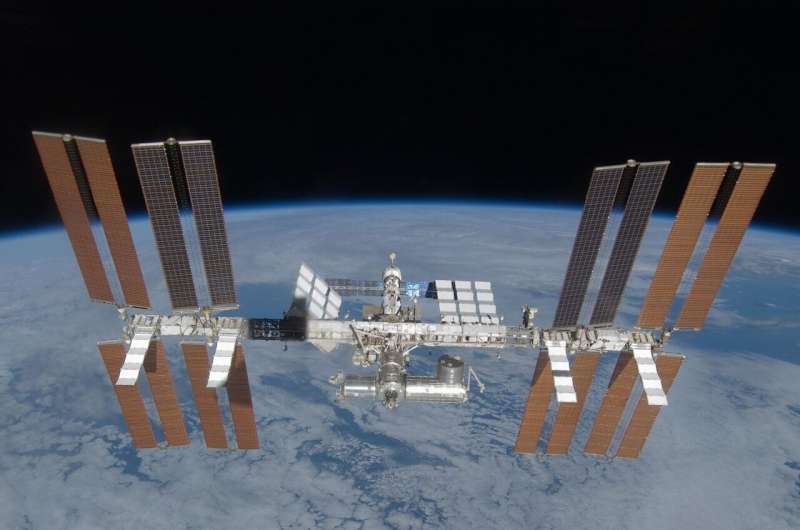China publishes world's first high-definition lunar geologic atlas
Monday, 06 May 2024 18:02
China has released a geologic atlas set of the global moon with a scale of 1:2.5 million, which is the first complete high-definition lunar geologic atlas in the world, providing basic map data for future lunar research and exploration.
This geologic atlas set, available in both Chinese and English, includes the Geologic Atlas of the Lunar Globe and the Map Quadrangles of the Geologic Atlas of the Moon, according to the Institute of Geochemistry of the Chinese Academy of Sciences (CAS).
"The geologic atlas of the moon is of great significance for studying the evolution of the moon, selecting the site for a future lunar research station and utilizing lunar resources. It can also help us better understand the Earth and other planets in the solar system, such as Mars," said Ouyang Ziyuan, who is a CAS academician and a well-known lunar scientist.
Iceye to allow customers to directly task the company’s imaging satellites
Monday, 06 May 2024 16:14

Boeing's Starliner set for first crewed mission to ISS
Monday, 06 May 2024 15:54 After years of delays, Boeing's Starliner capsule is set to ferry astronauts to the International Space Station (ISS) Monday, a milestone for the US aerospace giant and NASA.
The flight, a final test before Starliner takes up regular service for the space agency, is critical for Boeing, whose reputation has suffered of late due to safety issues with its passenger jets.
For NASA, the stak
After years of delays, Boeing's Starliner capsule is set to ferry astronauts to the International Space Station (ISS) Monday, a milestone for the US aerospace giant and NASA.
The flight, a final test before Starliner takes up regular service for the space agency, is critical for Boeing, whose reputation has suffered of late due to safety issues with its passenger jets.
For NASA, the stak Artist's view of the Ariane 6 components and payload with two boosters – blue background
Monday, 06 May 2024 13:39 Image:
Artist's view of the Ariane 6 components and payload with two boosters – blue background
Image:
Artist's view of the Ariane 6 components and payload with two boosters – blue background Artist's view of the Ariane 6 components with two boosters
Monday, 06 May 2024 13:39 Image:
Artist's view of the Ariane 6 components with two boosters
Image:
Artist's view of the Ariane 6 components with two boosters Artist's view of the Ariane 6 components with two boosters – blue background
Monday, 06 May 2024 13:39 Image:
Artist's view of the Ariane 6 components with two boosters – blue background
Image:
Artist's view of the Ariane 6 components with two boosters – blue background Artist's view of the Ariane 6 components and payload with two boosters – white background
Monday, 06 May 2024 13:39 Image:
Artist's view of the Ariane 6 components and payload with two boosters – white background
Image:
Artist's view of the Ariane 6 components and payload with two boosters – white background Muon Space and Earth Fire Alliance to build constellation for wildfire detection and response
Monday, 06 May 2024 12:10

Maxar inks agreement with Lockheed Martin to supply imagery for F-35 training simulators
Monday, 06 May 2024 11:52

Boeing faces critical launch ferrying astronauts to the International Space Station
Monday, 06 May 2024 10:06
Ferrying astronauts to the International Space Station has almost become routine—but not for Boeing and not on Monday, when after years of delay it's finally set to launch two crew members to the orbiting platform on a critical test flight.
The Arlington, Virginia-based aerospace giant was awarded a $4.2 billion contract in 2014 to build and operate a spacecraft to service the station, while El Segundo rival Space X received $2.6 billion to do the same.
Both were given out under NASA's Commercial Crew Program, established to have American companies taxi astronauts to the station.
The stakes are particulary high for Boeing. Since 2020, SpaceX completed its crewed test flight and has ferried eight operations crews to the base—while Boeing has managed only two unmanned flights, including one that docked remotely in May of last year.
Boeing has long-standing and historic ties to the aerospace industry in Southern California—the Apollo command and service modules were built at North American Aviation's plant in Downey. Its current operations include a satellite facility in El Segundo.
Boeing's new Starliner capsule was scheduled to launch with a crew last summer, but a problem was discovered with its parachute system and the use of flammable tape in the craft, a mile of which was removed.











